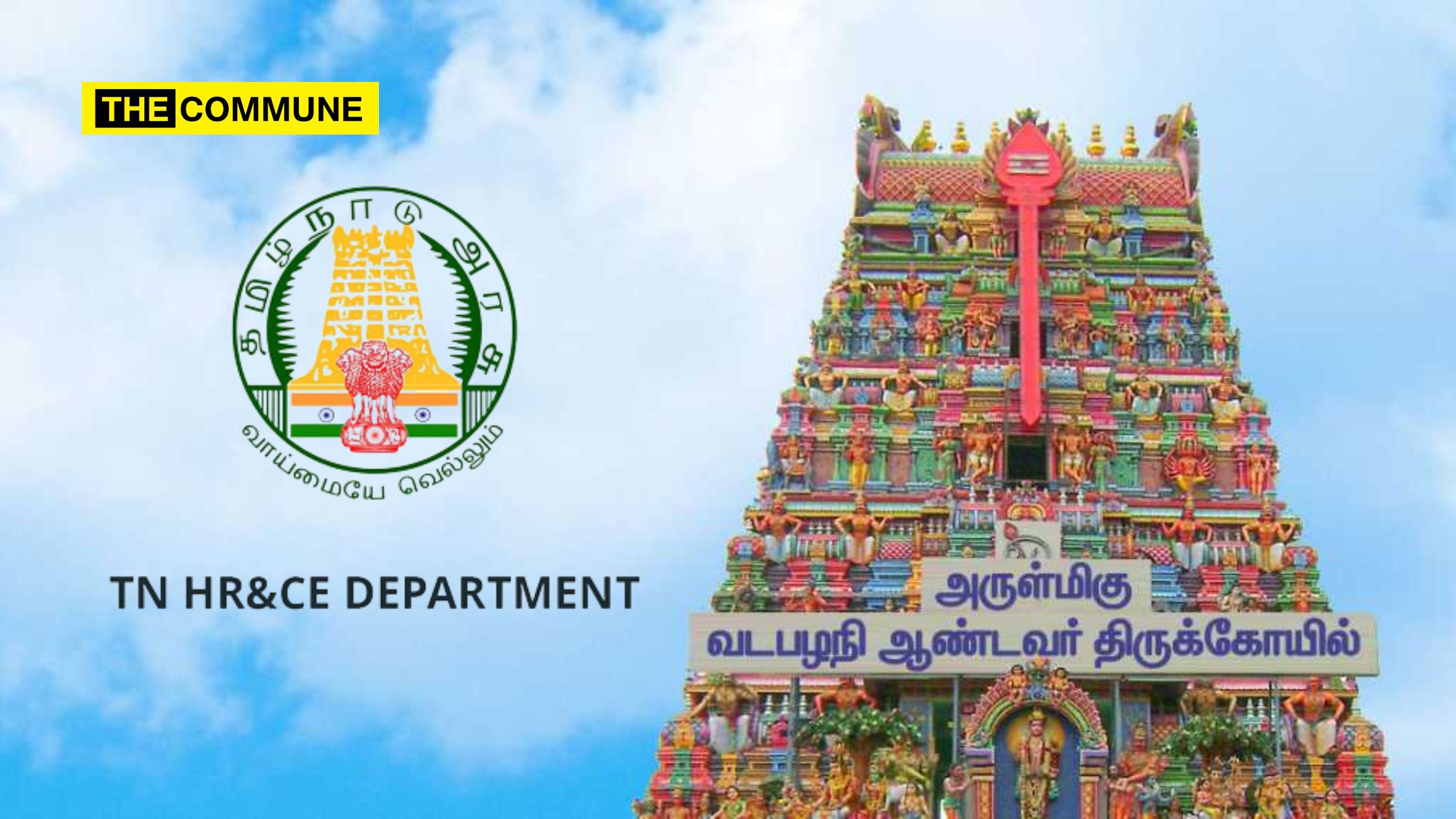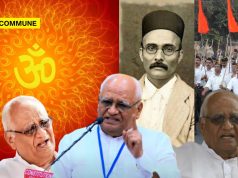
Tamil Nadu, the land of temples. Many of them are ancient and are of rich heritage value.
But these temples have become a den for the corrupt government officials to swindle money from the devotee in the name of God. Even a sitting High Court judge can be duped and extorted by these corrupt officials.
Justice SM Subramaniam of Madras High Court had gone to the Vadapalani Murugan Temple with his family on 17 December 2022 without disclosing his identity.
He had paid ₹150 for three special darshan tickets but was given two ₹50 and one ₹5 ticket. ₹45 went swaha!
When he questioned about the irregularity, the temple staff behaved rudely. He and his family were intimidated and gheraoed. The judge had noted that would’ve been pushed out like the officials do with others had the police not intervened and disclosed his identity.
This is the plight of a judge who voices out against the corruption plaguing inside the temples, courtesy the HR&CE department.
This has once again put the issue of ownership of the temples in focus.
Who Should Control Temples?
The issue of temple “ownership” and management has been a bone of contention between the Government (several Indian state governments) and Hindu citizens (both common people and religious leaders) for a while now. At the centre of this contentious issue, is the Hindu Religious and Charitable Endowments Act (HR&CE), applicable only to Hindu places of worship, as the name suggests. To cut a long story short, many people argue that the existence of the HR&CE Act and a department that oversees the implementation of the Act, is contradictory to the fundamental rights of Freedom of Religion that the Constitution guarantees to every citizen as well as the “secular” character of the country, implying a separation of governmental oversight and administration from religious affairs including temple management.
Freedom of Religion as guaranteed by the Constitution, for all the faiths practiced in the country, includes the right to chosen beliefs, worship, donations and can be extended to the choice of where and how the donations are put to use. The ‘secular’ nature of the Constitutional framework, advocates against the State’s interference in any matter of religious affairs and an equal treatment of all religions. Yet, it is only the Hindu temples and charitable organizations, that are regulated by the HR&CE department. Churches, mosques and their charities, schools, hospitals etc are not monitored, regulated, legislated or controlled by the State.
A temple is the home of the deity and it is He/She who owns the temple. So, the HR&CE Department or for that matter the government or any legal entity doesn’t ‘own’ the temple. Every temple has a Dharmakartha (trustee) or a trust to manage the affairs of the temple. The HR&CE Department can enter a temple only if there is an allegation of mismanagement. So, the existence of HR&CE Department in many temples of Tamil Nadu is illegl and unconstitutional.
HR&CE: A Colonial Legacy
The history of the HR&CE Act helps us understand its original purpose and intention but does not put to rest, the argument that its very existence stands in stark contradiction to our Constitutional principles of religious freedom, religious rights and non-interference in religious matters. During colonial times, the British kept an eye on temple donations and resources through their Department of Revenue, recognizing the potential of temples as significant financial contributors to their
economic and military plans.
After much deliberations and some resistance from people, they advocated the formation of a “department” to oversee temple affairs including the financial aspects of temple management. With specific regards to Tamil Nadu (Madras Presidency), around 1840, the then British Government was ready to give up administration of temples. The British administration invited some of the prominent “mutts” of the time (Hindu institution/monastery/ashram), in the state to look after important temples and endowments.
The Heads of Mutts who took over the administration of these temples, were careful enough to ask for written documents or “Muchalikas” from the British Government, as an assurance that the temples would not be taken back from them. Large temples and important places of worship came under the control and ownership of these Mutts and the Mutts ran them ably and efficiently.The primary purposes of worship and utilization of funds meant for the upkeep of temples and conduct of rituals, were managed well. While a few temples were responsibly and efficiently administered by the Mutts, thousands of other temples in the then Madras Presidency were handed over to the respective private “trustees” with the then Madras government playing little or no role in supervising them.
In 1925, the Madras Hindu Religious Endowments Act, 1923 (Act I of 1925) was passed by the local Legislature, with the supposed objective of providing better governance and administration to certain religious endowments. The Act divided temples into what are known as Excepted and Non-excepted temples. Immediately after the Act came into force, its validity was challenged on the ground that the Act was not validly passed. For this reason, the legislature enacted the Madras Hindu Religious Endowments Act, 1926, Act II of 1927 repealing Act I of 1925.This Act was amended from time to time and contiued even after India gained Independence and started to follow its own Constitution. Thus, it can be seen that even in the pre-independence era, the Board had systematically consolidated its powers to take over and administer temples. This unwelcome, unfair intervention by the Government applied only to Hindu Institutions.
The Board also tried to take over the famous Shri Guruvayurappan Temple in Guruvayur (Kerala), Udupi Shri Krishna Temple under the management of Shri Shirur Mutt of Udupi and Shri Venkataramana Temple belonging to the Gowd Saraswath Brahmins in Mulkipetta of South Kanara district.These religious institutions challenged the takeover by the HRCE Board.
A new Hindu Religious Act was passed by the Madras Government, known as the Hindu Religious and Charitable Endowments Act, 1951. The Madras Government was heavily influenced by EV Ramasamy’s “Dravidian” model, proclaiming “rationalism” as the only Truth. While it encouraged atheism and propounded rationalism among the Hindus, it largely left the idiosyncrasies of Islam and Christianity alone. The modern day follower of this blantant discrimination among the religions, is Tamil Nadu’s DMK party.
The Government’s stand on the continuance of temple control, back in the day, was that social justice would be sacrificed at the alter of caste based practices, including entry into temples and participation in temple activities. Petitioners now argue, there is no need for such a fear, given the changed circumstances in current times and the constitutional rights/ guarantees of individual liberties in India’s post-Independence climate.
Is The HR&CE Department Doing Its Job?
Regardless of the Constitutional validity of the HR&CE Act and regardless of the Act’s purported purpose and intent in the 1950s and now, it is clear that in the absence of private control of temples, temple properties and possessions, it is the duty of the HR&CE department to survey all temples both in use and not in use, conduct regular audits of the maintenance and upkeep of temples, temple lands and undertake regular renovation work of temples in disrepair. In earlier times, all such work was done under the patronage of kings and queens, devout citizens, wealthy patrons or private, charitable trusts run by certain communities or religious leaders.
Our magnificent temples, many of them architectural wonders and heritage monuments, occupy a place of honor and pride in our history and culture. Our roots and cultural history are tied to our religious/temple history. Since the HR&CE department replaces a network of earlier patrons, it must be held accountable for the welfare of temples and temple properties, in all aspect of their existence. Many argue that it amounts to criminal negligence if the HR&CE department does not preserve monuments of our ancient culture- our temples. Of the many states, that have argued against the validity and necessity of the HR&CE Act in a modern India, which has made significant progress with social practices like the outdated caste system.
Tamil Nadu acclaimed as the Land of Temples or “Temple Nadu”, is at the forefront of several hotly contested, empassioned debates. The Tamil Nadu government continues to vociferously argue on the basis of caste-based reasons to which the petitioners counter that it is not relevant anymore. The government persists on the question of future ownership and management “to whom should the temples be handed over to?” The petitioners promptly reply, that they should rightfully be handed back to the Hindu community and henceforth be managed by religious leaders, community leaders or religious and charitable Trusts, just like the churches & mosques of the minority communities.
One of the consistent arguments of the petitioners, presented with clear, visual proof, is a depressingly long list of old, heritage temples of historical and archaeological importance, that lie in ruins today, despite numerous requests and reminders to the State government for their renovation and maintenance. Repeated claims of over 5000 temples lying in ruin, is a disturbing figure and a sign of a country, not appearing to be proud of its cultural heritage.
Over the years, there have been several reports of stolen temple property/ possessions including ancient idols, jewelry and art work, worth millions and later proved to have been stolen. While a few priceless artifacts have been traced and recovered, many pieces of exquisite craft work, representing our culture and history are still missing!
Popular, respected religious leaders of the community including Sadhguru Jaggi Vasudev, have requested a re-examination of the validity of the HR&CE Act and a reconsideration of its proclaimed purpose, which is no longer relevant in current times. Here’s a small list of temples from Tamil Nadu, in dire need of renovation and upkeep, among many, many more that ordinary citizens, netizens and bloggers are trying to bring to light.
-Shiva Temple, Thellur
-Thiruvilaiyattam Shri AnnamalaiyarTemple
-Nagampanthal Shri Nagalingeshwarar Temple
-Saanur Shri Boothalingeshwarar Temple
-Puduthurai Shri Tharaneeswarar temple
-Pagasalai Sri AdiKesava Perumal Temple
-Poundarigapuram Somanadhaswamy Temple
-Koogaiyur Karyampureeshwarar Temple
– Uzhavarapani Thiru Magaral Temple
-Mangudi Sivalokanadhar Temple
-Nellithope Perumal Temple
There are many smaller temples which doesn’t even have the wherewithall to do even one pooja in a day. In these places, it is high time the privileged members of the Hindu community do their bit in saving these temples.
End Note
Justice Subramaniam’s visit to the Vadapalani Murugan Temple is a God send. Looks like Lord Murugan himself couldn’t stand the atrocities being committed by the corrupt officials of the HR&CE Department. The HR&CE Minister P. Sekarbabu, instead of bringing his house in order, is busy in making arrangements for CM’s son-in-law to do ‘Kshatru Samhara Yagnam’ while putting the devotees to distress.
Click here to subscribe to The Commune on Telegram and get the best stories of the day delivered to you personally.




